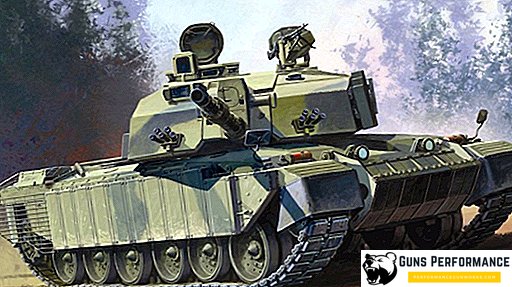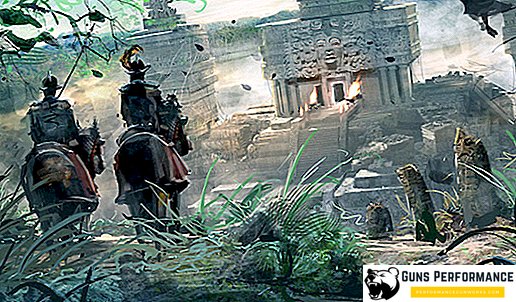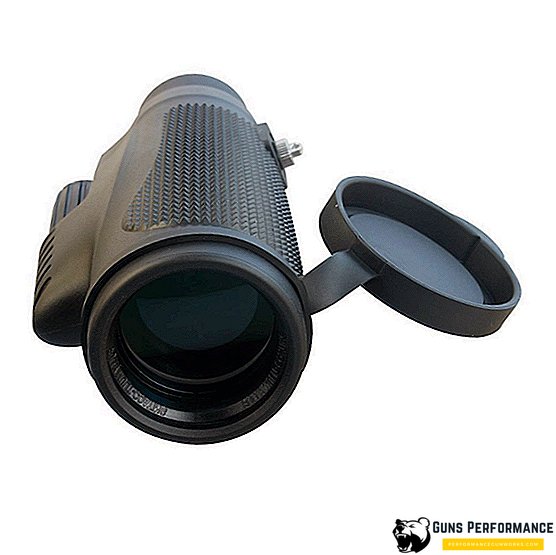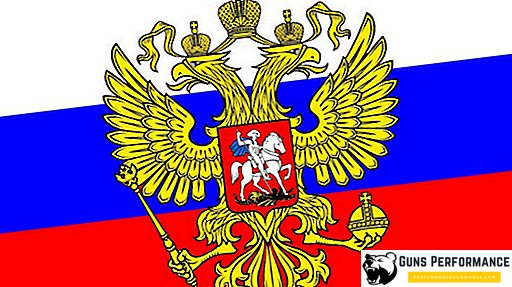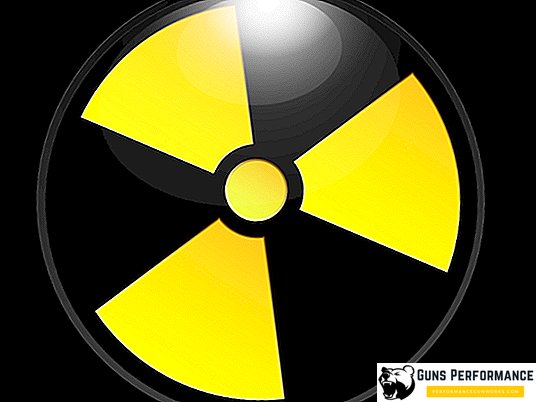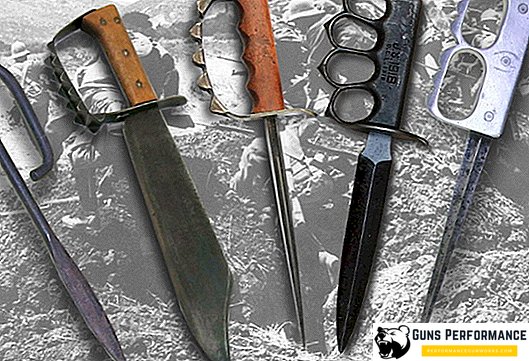The appearance of a German soldier of both world wars is impossible to imagine without an unusual hand grenade of unusual shape with a characteristic wooden handle. This grenade Stielhandgranate, which was developed in 1916 and with minor changes was in service with the German army for almost thirty years. It was called the "beater", the grenade had a very simple design and was very popular among the soldiers. The fighters of the German assault battalions, rising to the attack near Verdun, could lead a rifle behind their backs, but their hands were always free to effectively use hand grenades.
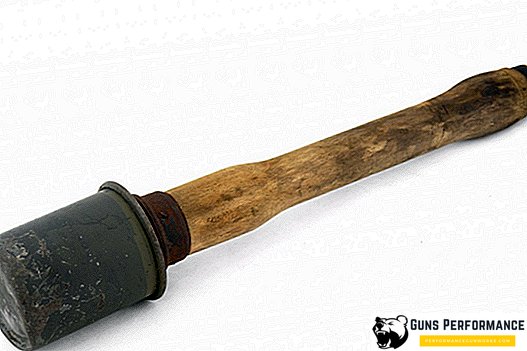
A bit of history
After the transition of the First World War to the protracted positional stage, all parties to the conflict became concerned with the search for simple and effective melee weapons that would be suitable for action among the craters and in the labyrinth of trenches. The ideal solution to this problem were hand grenades.
In Russia, just before the war, the Rdutlovsky hand grenade was created, and in England in 1916 the Lemon grenade appeared, which later gave the name to the F-1 grenade. In Germany, they very quickly evaluated the fighting qualities of the Rdutlovsky grenade and began developing their own counterpart.
Already in early 1916, a new grenade Stielhandgranate 15 appeared in the armament of the assault battalions, and a little later they became the usual armament of the German infantryman. In 1917, this munition was modernized and received the name Stielhandgranate 17, in 1924 the final modernization was carried out, after it the munition began to be called Stielhandgranate 24 and it remained unchanged until the end of the Second World War. The Germans called this grenade Kartoffelstampfer, which translates as "potato masher", and in the USSR it was usually called "beater".
During World War II, 7.5 million Stielhandgranate 24 units were manufactured. In the 1920s, the production of this grenade was launched in China, and was actively used during the Chinese civil war by both parties to the conflict. After the end of the war, this grenade was in service with the Swiss army.
Design
Stielhandgranate consisted of a metal case and a wooden handle. The metal case contained an explosive and a blasting cap that undermined explosives. In the hollow wooden handle was a flammable mechanism. The body of the grenade was made of millimeter sheet metal. At the same time, it did not weld, but was joined by four rivets. The handle twisted from below and had a length of 255 mm. The explosive was ammonium nitrate, gunpowder and aluminum powder. Sometimes trotyl was used as an explosive.
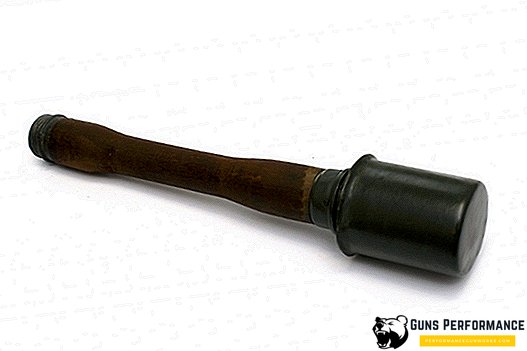
The ignition mechanism of the grenade was of a grater type, it consisted of a wire grater, which, passing through a hole in a special cup, straightened and set fire to a special composition. From this mixture, the moderator caught fire, which burned for about 4.5-5 seconds, during which time the grenade should have been dropped to a safe distance.
After the lapse of this time, a blasting cap detonated, which undermined the main charge of the explosive. At the end of the wire grater, a porcelain or lead ball was fastened, a grenade cord was made of silk, and a porcelain ring was placed at its end, for which the fighter pulled.
The grenade case was first primed, and then covered with gray or green paint, on the case there could be a hook for carrying a grenade on a belt. Not all grenades were equipped with a hook.
To prepare Stielhandgranate for a fight, it was necessary to unscrew the handle from the body and insert a detonator cap into the body, then screw the handle into place. When using a grenade, the fighter had to unscrew the bottom cap on the handle, pull out the silk cord and pull it hard, and then throw it at the target.
If the grenade did not explode for thirty seconds, then it could be considered safe.
Stielhandgranate could be used as an offensive grenade, in this case it had a radius of destruction of shrapnel from 10 to 15 meters. However, it could be used as a defensive one. For this purpose, a special steel shirt with a notch was put on the grenade. In this form, the "beater" acquired other characteristics: the damage radius increased to 30 meters, and the fragments scattered to 100 meters.
Modifications of the "beater"
At the end of the First World War, due to an acute shortage of resources in Germany and Austria, they began to produce grenades with an integral handle. Primer-detonator installed directly at the factory.
Another modification of the grenade was an option with a stronger grip handle. For this purpose, the case coupling, where the handle was twisted, was made longer. In this modification, the metal cap on the handle was replaced by a cardboard one. There was also a modification that exploded on impact.
There was also a modification (it was produced at the end of the war) in which a cardboard handle was used.
Known artisanal modifications of the grenade, in which instead of twisted wire used spring percussion mechanism.
Grenades were also made with a moderator designed for six or three seconds. On the arms of such ammunition this figure was burned.
In the First World War, a smoke grenade was created on the basis of Stielhandgranate, which was successfully used at the front.
Other uses
Stielhandgranate was also used as an anti-personnel mine. A fuse of pushing action was screwed onto the case with the blasting cap.
In order to undermine the tank or the strengthening of the enemy, from these grenades made bundles. To knock out a Soviet tank, German infantrymen often enclosed such a bundle under the tank's feeding niche. The force of the explosion was enough to disrupt the tower or jam it. You can not even say how dangerous this technique was in battle. To defeat a heavy Soviet KV-2 tank, sometimes they threw ammunition directly into the barrel.
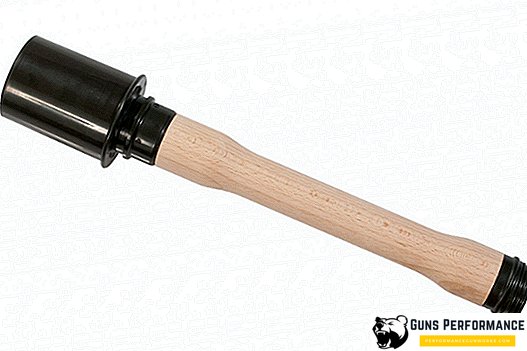
Advantages and disadvantages
Benefits:
- good balancing, allowed to throw a grenade at 30-40 meters (middle fighter);
- low cost and excellent workability;
- heavy explosive weight.
Disadvantages:
- weak explosive;
- warhead and fuse afraid of moisture and dampness;
- after pulling out the checks, the grenade immediately needed to be thrown.
In 1916, the "beater" was really an advanced grenade, but by the beginning of the Second it was already morally and physically obsolete. The Germans tried to modernize it several times, but nothing good came of it.


